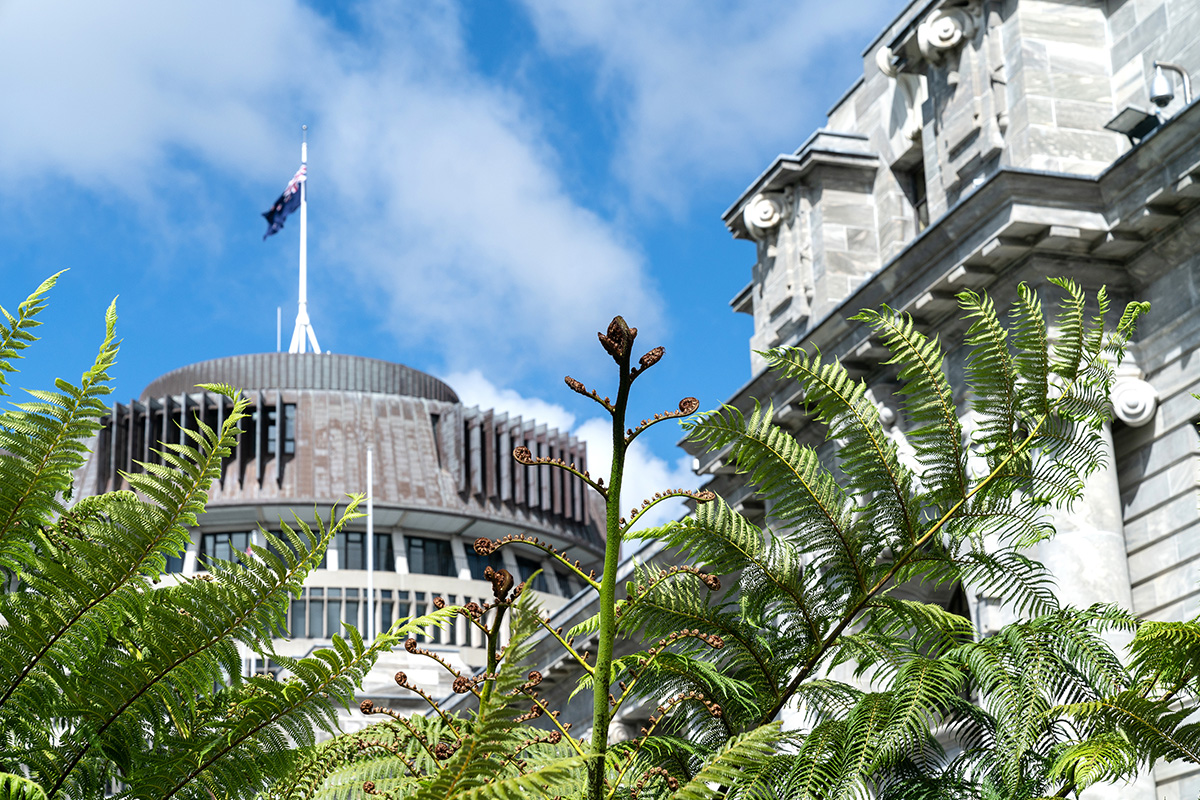With the side show of the election in the rear-view mirror, astute investors will remain focused on companies that can continue to perform through a tough economic environment. The aftermath of the New Zealand election is yet another reminder of the distraction that politics can be for investors.
The litmus test for the election result was the market’s price action on the Monday after. The benchmark NZX50 index was down 0.7%, most of which can be attributed to US market moves the Friday before – the S&P500 index was down 0.5% – with some of the extra weakness due to Fletcher Building’s price fall (more on that later).
A damp squib, nothing to see here.
Not a surprise – investing around politics alone is not worth your while
Investing to benefit from political events is notoriously difficult, which is why we focus our energies on what is happening with individual companies. For example, when Trump was elected in the 2016 US Presidential election, stock futures fell ‘limit-down’ more than 5% before markets actually rallied over 1% the next day. In addition to the predicting the outcome of the election, investors were struggling to even predict whether his presidency would be a good or a bad thing for the US economy and companies.
There is also the common mantra that ‘markets don’t like uncertainty’. We did not know the final vote count until after special votes were counted, and then there was the three-way coalition negotiations afterwards, so you might have expected a soggy stock market in the interim.
However, ambiguous New Zealand election results in the past suggest this is not the case. In 1996, it took about two months for the first coalition government to be stitched together after the historic first MMP election. However, in this period, the Kiwi stock market rallied 7%, in line with the US market.
Again, in 2017, there was uncertainty when Labour received fewer votes than National, but Jacinda Ardern formed a government with the Greens and NZ First. The market took this in its stride, up 4% between the election and the announcement, in line with the Australian market and ahead of the US, despite an unexpected left-wing outcome and three-party coalition.
So, it did not come as a surprise that recent share market performance has not suffered a post-election overhang while coalition negotiations were ongoing.
Winners and losers on the NZX?
The most obvious sector that loses post-election is the commercial property sector. When National matched Labour’s policy to remove depreciation from commercial buildings for tax purposes, the listed property sector collectively shed 2.5% on the day. Fundamentally, analysts expect distributable earnings for those companies might drop by about 5%.
It is more of a stretch after that. There was certainly nothing that compares with the Biden-backed ‘Inflation Reduction Act’ (IRA), which was passed into law in 2022 and will funnel almost US$400 billion into clean energy initiatives. This has been a boon for renewable energy companies including boosting NZX-listed Infratil’s investment in Longroad Energy, which develops battery-backed solar projects and can utilise the plethora of tax credits on offer.
In the electricity sector back here in New Zealand, a National-led government is set to discontinue the Lake Onslow pumped hydro project. Labour had punted out a decision on the project until after the election. This was based on getting the best value for money from public spending, the projected cost of the project had snowballed to $15b from an earlier estimate of $4b. The whopping Onslow price tag translates to spending about $3,000 per New Zealander. The project would not actually create net new generation capacity but replace a comparatively modest amount of coal or gas-fired generation in dry years where available renewable generation is low.
New renewable projects built under the free market are shortly coming online. These include the likes of Meridian’s Harapaki wind farm and Contact Energy’s Tauhara geothermal power station. This should continue to increase New Zealand’s renewable electricity percentage from 87% in 2022 to more than 95% over the next decade and put downwards pressure on electricity prices. Despite the large overall price tag, the IRA is only costing the US about the equivalent of $2,000 per person and will support the US getting to majority clean energy over the next decade from a low starting point of only 20% in 2022, which provides context for the high cost of Onslow.
Business confidence should get a boost, but will the economy really benefit?
Going back over more than 50 years, the stock market has on average delivered higher returns under National-led governments than Labour. On closer inspection, this has been influenced by Labour holding office during the some of the worst periods for markets – such as the 1987 stock market crash and global financial crisis. There does not appear to be conclusive evidence for stronger economic growth under National-led governments. The major parties are probably not as different as they would lead us to believe when they are clamouring for our votes.
That said, various surveys suggest business confidence has recently been at a low ebb as companies have contested with skills shortages, increased regulation, inflationary wage growth, and are now seeing softer demand. It is hard to think improved business confidence would be a bad thing; it just might not be much of a good thing either.
Many of the macroeconomic factors that local companies are grappling with – such as cost inflation, higher interest rates, and weak demand – are playing out globally and cannot be seamlessly solved by a new government.
Company fundamentals remain most important, witness Fletcher Building
A new government does not meaningfully change the prevailing fundamentals for most companies. How individual companies perform tends to depend more on their own execution than government policy.
A case in point is Fletcher Building. Many commentators had expected the building products company to benefit from a revitalised construction market under National, but anyone betting on that would have been sorely disappointed to see their thesis unravel over election weekend. After resuming trading on Monday morning, the company’s shares closed down 11.6%. This was after new information came to light that suggests its plastic pipe problems in Australia may cost meaningfully more than the $15m provision it has set aside to fix the issues.
Meanwhile, other companies such as Infratil continue to invest wisely into areas of growth and, in doing so, make their own good luck.
We and other investors are best served to simply focus on continuing to identify and back them.
A version of this article was originally published in the NBR on 24 October 2023 (paywalled).
Talk to us
If you would like to make sure you have the right investment strategy to help you reach your goals, the team at Fisher Funds are here to help. Please contact us or get in touch with your adviser.

